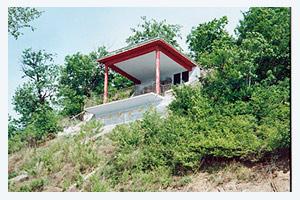1) Qingyun dialect


庆云方言
1.
By comparing with mandarin,the paper analyzes Qingyun dialectal auxiliary words Zhou(着)and Dizhou(的着)from three aspects including special usage,grammaticalization and grammatical meaning,similarities and differences of them.
以与普通话比较的方式,从特殊用法、语法化和语法意义、两者异同等三个方面描写分析了庆云方言里的助词"着"和"的着",可以发现"的着"即"去着",并与普通话"来着"相当。
2) Chongqing dialect


重庆方言
1.
Differences of interrogative sentences between Chongqing dialect and common spoken Chinese;
重庆方言疑问句与普通话的差异
2.
Chongqing dialect "dei" can be used as position proposition which means "zai ","dao".


重庆方言"得(dei)"可作方位介词表示"在"、"到"的意义,这种用法也见于中、近古时期汉语的一些书面语言。
3) Anqing dialect


安庆方言
1.
The interrogative pronouns of Anqing dialect mainly have"哪、么、几、好"and so on.


安庆方言疑问代词主要有"哪、么、几、好"等几组,它们的组合形式和语法功能与普通话存在较大差异,本文对此做了较详尽的探讨。
4) Chongqing dialect drama


重庆方言剧
1.
Therefore,Chongqing dialect drama,as a channel to promote Chongqing dialect should get a higher rating,we should do more things from the script,creators and application.
因此,重庆方言剧作为推广重庆话的一种渠道,要走向全国,应从剧本、创作者和语言应用上下功夫。
5) Yunnan dialect


云南方言
1.
A Comparison between "v.+掉" Pattern in Yunnan Dialect and that in Mandarin;


云南方言“V掉”的用法与普通话的异同
2.
Yunnan dialect and ways of correcting Yunnanese students mistakes in English pronunciation;
云南方言与英语正音问题探究
3.
"bu you","you de" and "bu you de" account for more than half of Yunnan dialect while "de" in Yunnan dialect originated from "de" in ancient Chinese that indicated the ending or continuity of an action.
"不有"、"冇得"、"不有得"在云南方言中占了半数以上,其中的"得"字是古代汉语中"得"的表示动作的完成或持续的用法在云南方言中的保留,"不有"在古汉语中和在云南方言中也基本一致。
6) Chishui dialect


白云方言
补充资料:庆云女真摩崖石刻

庆云女真摩崖石刻
庆云女真摩崖石刻位于吉林省梅河口市区西南40公里的小杨乡庆云村的半截山的南坡。是我国仅存的几块女真字碑之一,距今已有800年的历史,是辽金战争时的佐证。
摩崖石刻在距地表22米的半山腰一块凸出的砬石上,砬石从上到下有一道裂缝,将石壁劈成为两部分。西侧碑高约2米,宽1米,面向东南、东部刻有女真字,每行4-15字不等。左上凸起部分还有3行14个女真字。 经专家孙进译释为“我文河台于收国二年五月五日、率领家族部落,集合至番安儿之源。擒获颇多,因此谋克为学董”。东侧石壁面南偏东,碑高2.45米,宽1.1至2.5米不等。右上角刻有汉字“大金太祖破辽军于节山息马立石”,右起竖书楷,字3行15字,字迹清晰。旁注女真文23个字, 形成汉字和女真文两种文字对照排列。
说明:补充资料仅用于学习参考,请勿用于其它任何用途。